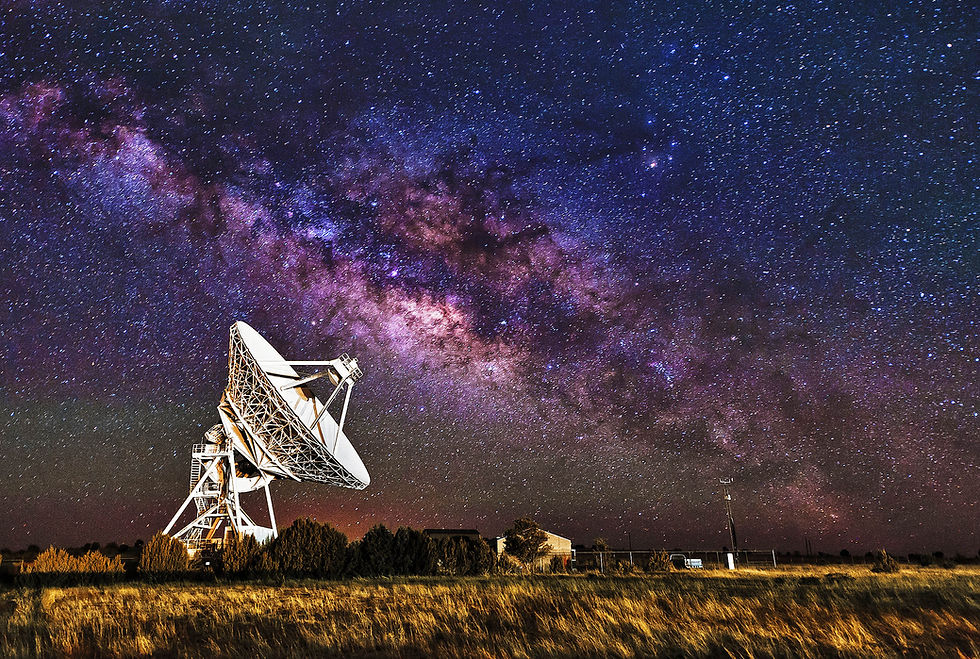Stars, The Life of Cosmic Giants
- Iruni Kalupahana

- Nov 2, 2024
- 3 min read
Iruni Kalupahana Jadetimes Staff
I. Kalupahana is a Jadetimes news reporter covering Universe

The Vastness
Astronomers estimate that the universe may contain as many as one septillion stars a one followed by 24 zeros. Our galaxy, the Milky Way, alone has over 100 billion stars, including the Sun, our closest and most studied star. The diverse characteristics of stars range in mass, temperature, size, color, and luminosity, which are influenced by their varying distances from Earth.
Stars appear as tiny points of light from Earth but differ vastly in brightness and color, from blue and bright for massive, hot stars to red and dim for cooler, lower mass stars. The universe’s stars are distributed across countless galaxies, some more than 10 billion light years away, providing an incredible diversity that showcases the vastness and complexity of the cosmos.
The Birth
Stars begin life in molecular clouds, which are immense, cold regions of gas and dust, spanning hundreds of light years and containing up to 10 million times the Sun’s mass. The cold environment allows gas particles to cluster together, creating dense pockets that grow as gravity pulls in more material, eventually collapsing into protostars.
These young stars ignite nuclear fusion in their cores when temperatures reach millions of degrees. Groups of stars forming together within these molecular clouds are often referred to as star clusters, while the areas filled with newborn stars are known as stellar nurseries. Over time, these stars might drift apart, but their shared origins remain a key to understanding star formation.

The Aging and Energy
Stars rely on nuclear fusion, which converts hydrogen into helium, as their primary energy source. A star’s mass dictates its brightness, temperature, and fuel burning rate, larger stars burn hotter, shine brighter, and consume fuel faster, leading to shorter lifespans. For instance, massive blue stars may live just a few million years, while small, cool red stars could last trillions of years.
In a balanced state known as hydrostatic equilibrium, the outward pressure from fusion energy counteracts gravity’s inward pull, stabilizing the star. This balance holds for billions of years in main sequence stars like our Sun, which is currently midway through its 10 billion year lifespan, slowly increasing in brightness and temperature as it ages.
The Death and Transformation
A star’s ultimate fate depends on its mass. Low mass stars, such as our Sun, end their lives by expanding into a red giant as they exhaust hydrogen fuel, eventually shedding outer layers to form a beautiful, glowing planetary nebula. What remains is a white dwarf, a dense core that gradually cools over billions of years. High mass stars, however, experience multiple stages of fusion, forming heavier elements like carbon, oxygen, and silicon.
This process continues until the core is composed of iron, which cannot be fused without consuming energy. The core collapses rapidly, creating a powerful supernova explosion that scatters elements into space. Depending on the remaining mass, the core can become either a neutron star or a black hole, both of which are among the universe’s densest objects, with neutron stars packing several suns’ worth of mass into a city sized sphere.

The Importance of Stars and How Scientists Study Them
Stars are fundamental to the universe’s chemical makeup and the emergence of life. Early in cosmic history, only hydrogen, helium, and trace lithium existed, but stars’ nuclear processes created all other naturally occurring elements, from carbon and oxygen to iron and gold. This stellar material, expelled into space, provided the building blocks for new stars, planets, and even living organisms.
Scientists study stars through advanced ground and space telescopes, which detect a wide range of wavelengths, including visible, infrared, and ultraviolet light, offering insights into stellar temperatures, compositions, and lifespans. Computer models and lab experiments complement these observations, helping scientists predict how stars evolve and their role in shaping galaxies. Closer to home, our Sun’s gravitational pull, light, and heat drive Earth’s climate, ocean currents, and photosynthesis, making stars indispensable for planetary ecosystems and life as we know it.
































Comments